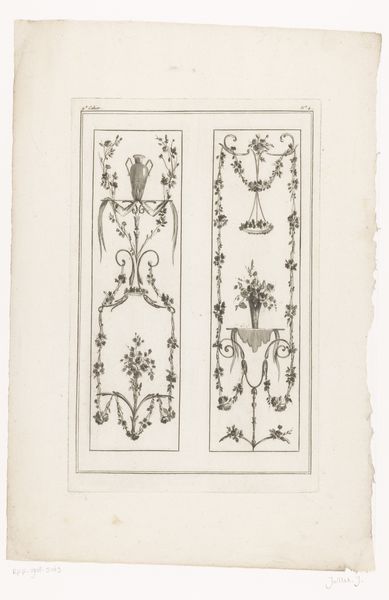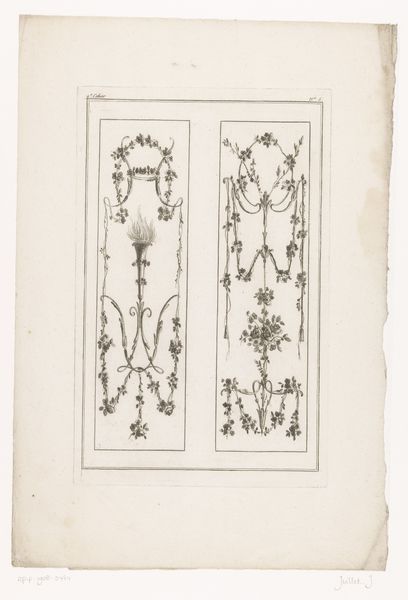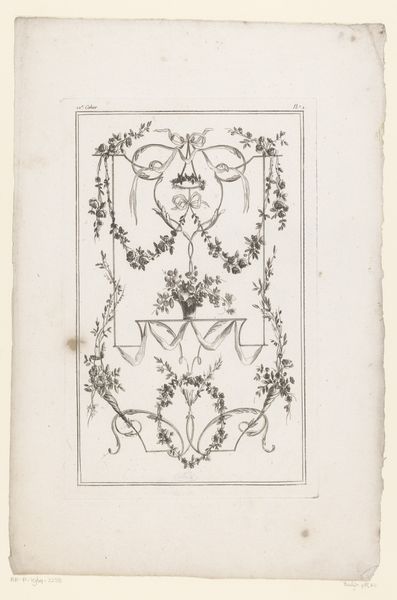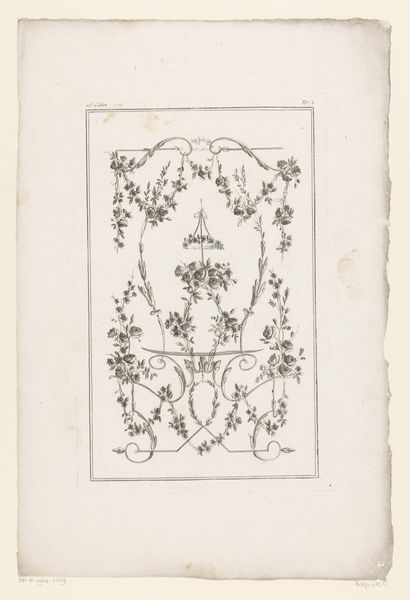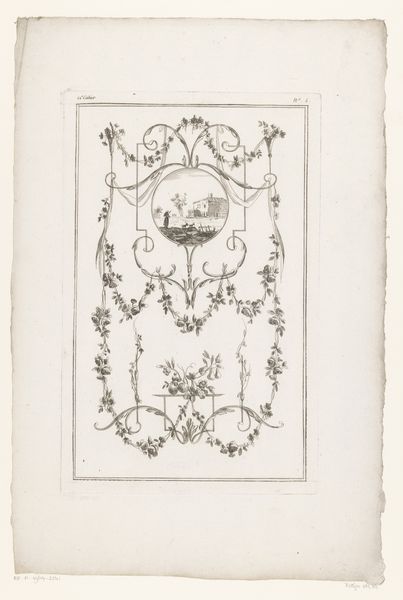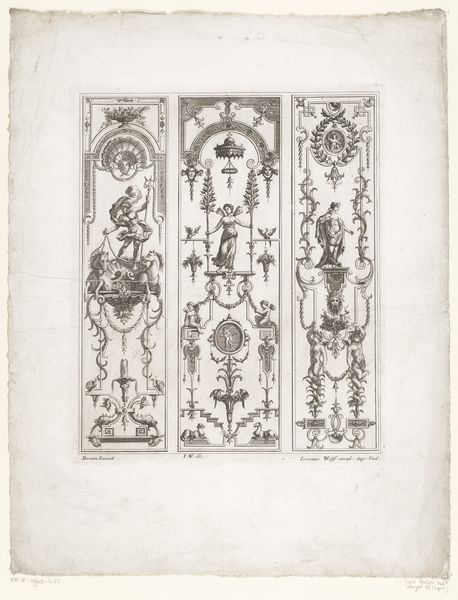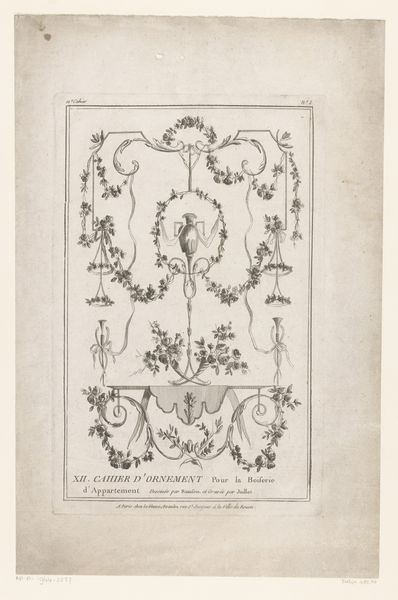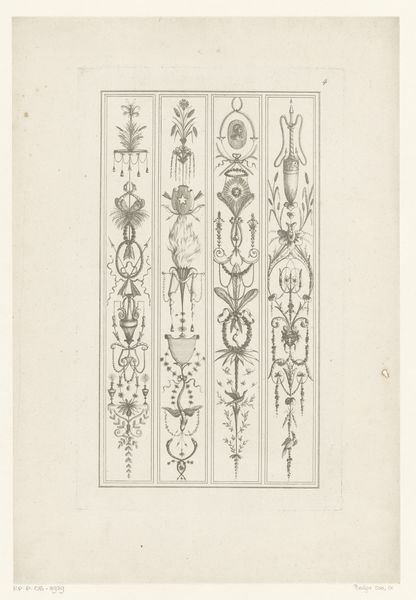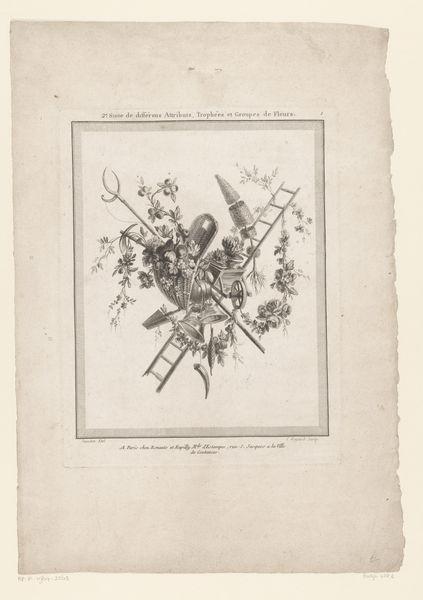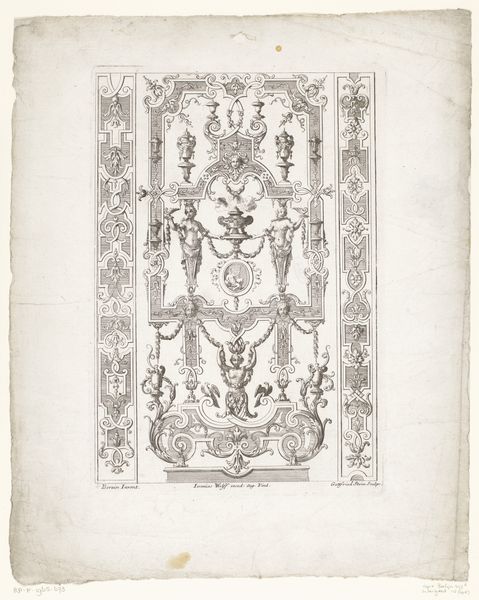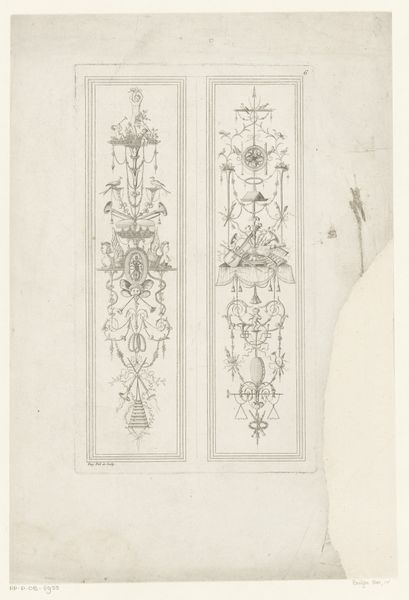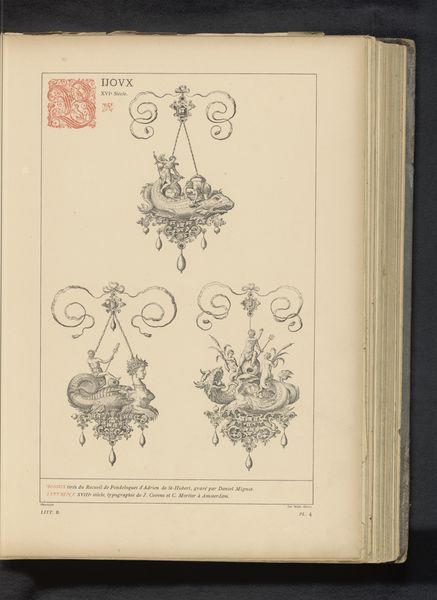
Dimensions: height 321 mm, width 204 mm
Copyright: Rijks Museum: Open Domain
Editor: Here we have Jacques Juillet's "Panelen met vazen en herdersattributen," dating from 1777 to 1779. It’s an engraving in ink on paper, held at the Rijksmuseum. It has this delicate, almost fragile quality... what do you see when you look at this print? Curator: I see a negotiation, even a tension, between the aspirations of the French aristocracy and the social realities of the late 18th century. Rococo, the style evident here, was favored by the elite. Yet, consider these pastoral motifs. Aren’t they a sort of romanticized escape *from* the very social order that sustained them? Who is included and excluded from the imagery? Editor: That’s a really interesting point, this idealization of the simple life seems contradictory when commissioned for wealthy homes. How does that tension manifest itself formally? Curator: Look closely at the idealized forms, so elegantly presented but ultimately empty, symbolic stand-ins for real rural life. Note too the precision of the engraving – technically masterful, yes, but also perhaps indicative of a need for rigid control amidst growing social unrest. What purpose does the "decorative" aspect truly serve, do you think? Editor: So the beautiful rendering is almost a mask for the underlying social anxiety of the time? The decorations become a way to ignore the wider inequalities? Curator: Precisely. And how might we read the “IX CAHIER D’ORNEMENT” aspect of the text, this idea of endless reproducible ornament, as further distancing lived experiences from elite aesthetic practices? Does it become an almost commodified escape? Editor: I’ve never thought of Rococo art this way, viewing its decorative elements through a lens of social commentary, rather than just focusing on their beauty. Thanks, that's incredibly helpful! Curator: Absolutely, it enriches our understanding to recognize the beauty, but also to look for the power dynamics implicit in it, how art shapes and is shaped by societal issues of gender, race and class.
Comments
No comments
Be the first to comment and join the conversation on the ultimate creative platform.
